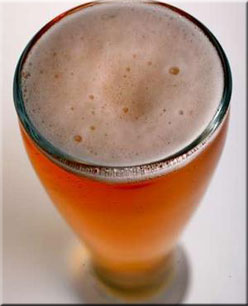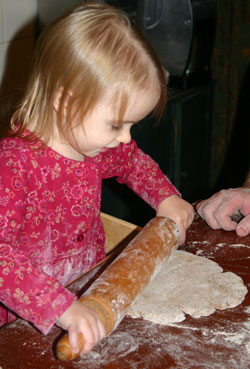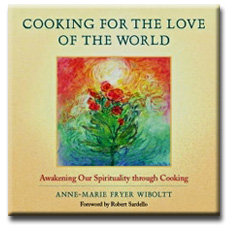Natural sweeteners have been around for a long, long time. The first ones which come to mind are fruits and honey. Traditionally these were seasonal or limited in supply, and so used moderately.
In fact, all sweeteners have traditionally been used moderately in cultures of the past. It wasn't until fairly recently that refined white sugar became widely available that sweeteners took a dominating place in the diet.
There are many different kind of sweeteners and sugars. Usually they are referred to as carbohydrates, but carbohydrates are very different from one another. The simplest of the carbohydrates are mono saccharides, which means single molecules of sugar. Next are di-saccharides, which are two single sugar molecules linked together. The mono and di-saccharides are what make up many of our common sweeteners. The most wholesome of carbohydrates are called polysaccharides.
Polysaccharidesare more complex carbohydrates. They are formed in nature in a chain of many mono saccharides linked together. When we eat polysaccharides in the form of whole grains, vegetables and breads for example, we find that they get sweeter in our mouth as we chew them. This is because the enzymes in the saliva are designed to break the complex carbohydrates down into simpler sugar molecules. In this way, mono saccharides are slowly and steadily released. The body uses them effectively without getting a 'sugar high'. These foods are absolutely the best to eat in order to satisfy the sweet taste.
Mono saccharides, which we call simple sugar, are known as fructose, glucose ( also called dextrose), galactose, xylose, and sorbose. They are found in what we considered sweeteners. Fructose, for example, is the type of sugar found in fruits. In whole natural fruit, which contains some vitamins, minerals and water, fructose becomes more balanced and a better food for the body. In that form it is also absorbed a little more slowly into the blood, and therefore less harmful. However the product sold in health food stores as fructose is usually very refined sugar, processed out of corn.
Glucose is another of the basic monosaccharides. It is found naturally in fruits, vegetables, and grains. When eaten in this form, the body uses it quite efficiently. However, when isolated and refined, it enters the body in the form of a simple sugar, and disturbs the balance of the blood sugar as other refined sugars do.
Disaccharides, made of two sugar molecules linked together, are best known as sucrose and maltose.
Maltose as the name suggests, is made from the malting of whole grains. Malting is a natural process that uses enzymes found in grains to produce the sweetener.
Sucrose is what is found in white sugar. It is built of one molecule of fructose linked with one of glucose. Being overly refined and lacking in any other kind of nourishment, white sugar is hard on the health of the body. Other forms of cane sugar are also very harmful. Turbinaro sugar is about 2 % less refined than white sugar, and brown sugar is actually white sugar with a bit of molasses put back into it.
When a lot of mono and disaccharides are eaten directly, whether in the form of fruit, refined sugar, or natural sweeteners, they are absorbed by the blood too quickly. This throws the body balances into chaos. It is therefor wise to approach all sweeteners cautiously and with moderation and consume them with a meal or with some kind of fat, like cream, coconut oil or butter.
Low calorie and sugarfree sweeteners are for the most part mono saccharides. They are produced artificially from other mono saccharides using chemical processes. Since they are artificially produced they make even white sugar seem like a "health food". Indeed, they can be much more harmful than sugar.
OATMEAL COOKIES
1 1/2 c rolled oats
1 c whole wheat pastry flour
3 Tbsp coconut oil
3/4 c chopped walnuts
1 c rice syrup or barley malt
1/2 to 1 c apple juice
½ tsp vinegar
1/8 tsp sea salt
Mix all the dry ingredients first. Rub in the oil, add rice syrup, vinegar and juice, Mix it well. Form small balls, and flatten each on an oiled baking sheet. Bake in a pre-heated oven at 350 F for 20 minutes. These cookies are crispy and quick to make. For better digestibility let the cookie dough rest for 6 hours before baking.
•Variation: Add seeds (sunflower, sesame), or dried chopped fruits ( raisins, dates, etc.).
NOUGAT
1 c barley malt
1/4 c water
½ tsp vinegar
1 c rolled oats
3/4 c roasted sunflower seeds
1/2 c roasted sesame seeds
1/2 c milk or cream or almond milk
1 tsp vanilla
1/2 tsp sea salt
1 tsp cinnamon
Heat the barley malt and water in a skillet. Add the other ingredients, and mix well. Press the mixture firmly into an oiled baking pan, and bake at 350 F for 10 minutes, or until golden. Cut into squares. For better digestibility let the nougat rest for 6 hours before baking.
•Variation: Mix with different chopped nuts or dried fruits.

Anne-Marie Fryer Wiboltt is a Waldorf class and kindergarten teacher, biodynamic farmer, author and nutritional counselor. She has taught nutritional cooking and counseled for 25 years in her homeland Denmark, Europe and the United States.
She trained as a macrobiotic cooking teacher and counselor and studied the principles of oriental medicine and the research of Dr. Weston A. Price before embracing the anthroposophical approach to nutrition, food and cooking.
This Four week course will explore some of the many benefits of fermented and cultured foods,

and why it is important to include them regularly with every meal. You will be guided through the steps of making sauerkraut, kimchi, pickled vegetables, kefir, soft cheese, and yogurt, as well as get a chance to discover new fermented drinks such as kvass, wines, and beers. I will aim at answering personal questions around your culturing and fermenting experiences.
Intuitively we know that cultured and fermented foods are real health foods. Naturally fermented and cultured foods are an exceptional way to prepare different ingredients and some of the most important side dishes and condiments in our diet. They are often overlooked or not mentioned when we describe what we had for dinner, and yet they are pivotal in creating a well-balanced, nutritious meal.
They add a bounty of nourishing, life-promoting substances and life forces, almost miraculous curative properties, and a wealth of colors, flavors, and shapes. They increase the appetite, stimulate the digestion, and make any simple meal festive and satisfying. The course will be highly practical with many hands-on activities.

In this Four week course you will learn about the nutritional needs of your growing child and receive delicious, seasonal, wholesome nutritious menus and recipes on affordable budget so as to encourage children to eat and live healthy.
During this course we will explore the nutritious needs for your growing child.
We will discover how rhythm, simplicity and nourishing activities support a healthy child development. You will find new ways to encourage your child to develop a taste for natural, wholesome foods as well as receive and create delicious, seasonal nutritious menus and recipes that stay within the limits of your budget.
Cooking for the Love of the World:
Awakening our Spirituality through Cooking
by Anne-Marie Fryer Wiboltt

A heart-centered, warmth-filled guide to the nurturing art of cooking. 200 pages, softbound

 Anne-Marie Fryer Wiboltt is a Waldorf class and kindergarten teacher, biodynamic farmer, author and nutritional counselor. She has taught nutritional cooking and counseled for 25 years in her homeland Denmark, Europe and the United States.
Anne-Marie Fryer Wiboltt is a Waldorf class and kindergarten teacher, biodynamic farmer, author and nutritional counselor. She has taught nutritional cooking and counseled for 25 years in her homeland Denmark, Europe and the United States. and why it is important to include them regularly with every meal. You will be guided through the steps of making sauerkraut, kimchi, pickled vegetables, kefir, soft cheese, and yogurt, as well as get a chance to discover new fermented drinks such as kvass, wines, and beers. I will aim at answering personal questions around your culturing and fermenting experiences.
and why it is important to include them regularly with every meal. You will be guided through the steps of making sauerkraut, kimchi, pickled vegetables, kefir, soft cheese, and yogurt, as well as get a chance to discover new fermented drinks such as kvass, wines, and beers. I will aim at answering personal questions around your culturing and fermenting experiences. In this Four week course you will learn about the nutritional needs of your growing child and receive delicious, seasonal, wholesome nutritious menus and recipes on affordable budget so as to encourage children to eat and live healthy.
In this Four week course you will learn about the nutritional needs of your growing child and receive delicious, seasonal, wholesome nutritious menus and recipes on affordable budget so as to encourage children to eat and live healthy.

